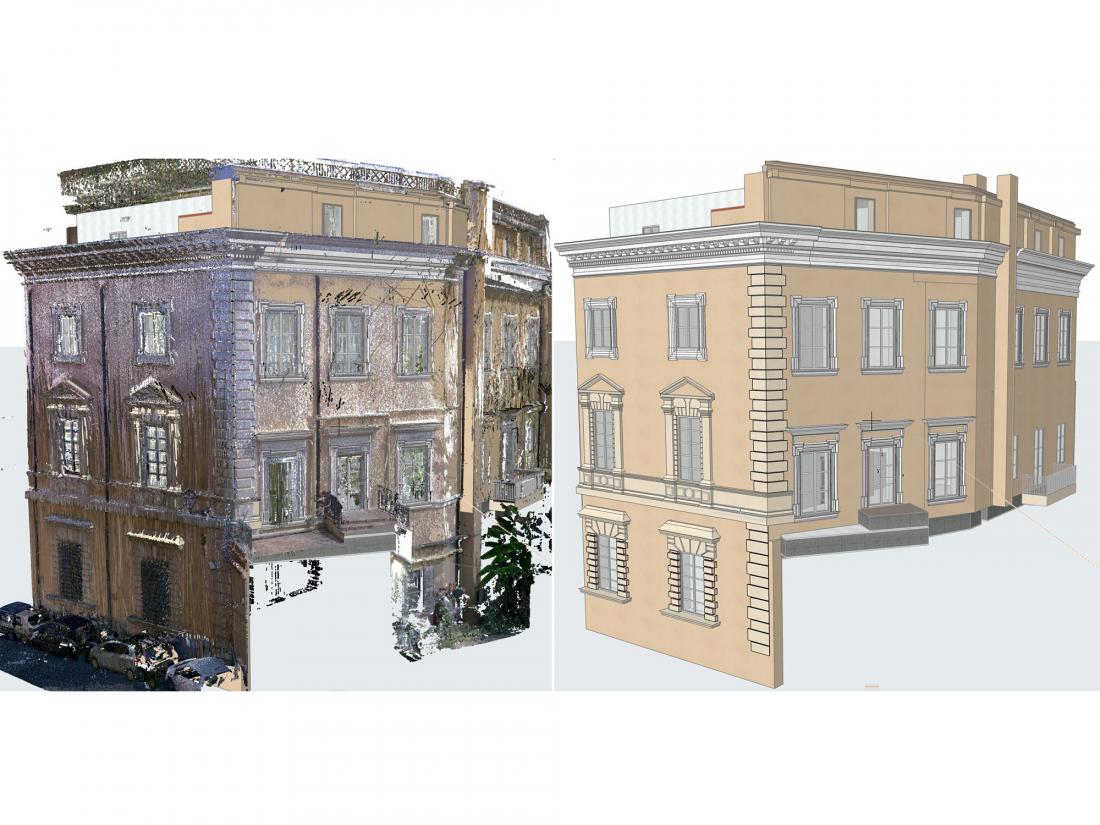BEEP explains the challenges of applying Building Information Modelling to heritage buildings

HBIM acronym refers to Heritage or Historical Building Information Model, that is the use of BIM methodology in the built heritage. A historical building, beyond its physical and geometric characteristics, is represented by a large amount of heterogeneous information. Heterogeneity and accessibility of data have always been a problem in the field of conservation, renovation and valorisation of historic buildings. As demonstrated by the growth of studies, mainly in the Italian and UK area, BIM seems capable of triggering a new evolution in the management of all "knowledge documentation” aimed at the conservation project and beyond, and could answer to the growing demand of accessibility and management methods for multidisciplinary knowledge.
Although BIM was initially designed for new buildings, its aptitude for accumulating interrelated semantic information makes it a tool with great potential also in application to existing buildings, and to cultural heritage. Despite its potential for the built heritage, the scientific literature on BIM still shows a strong predominance of BIM applied to new construction, with only a small part of scientific productions concerning BIM applications to existing buildings and an even smaller part related to historical buildings.
In the heritage field, in fact, the development and management of parametric geometries is harder due to the heterogeneous nature of existing objects, deriving, for instance, from a laser scanner survey. The same also applies to information modelling, which refers to processes and data that can be very different from those related to the new buildings. These deviations from a routine application involve the need for reflection on the appropriate objects and parameters for the historical building, which are not present in the available libraries or in the native software functions nor in the standards currently available.
NOTE: The content of this news is an extract from Output 3.1 of the BEEP project where you can find all duly referenced bibliographic citations (click here).
About the BEEP project:
BEEP project aims at strengthening the use of Building Information Modelling (BIM) to enhance energy efficiency in buildings. The testing of this emerging technology on built heritage will be performed to demonstrate its scalability to the entire building stock. The project will provide public administrations with a powerful method for the energy rehabilitation of public buildings to be supported with private funds through the Energy Performance Contracting (*). The project main outcome will be an innovative methodology based on the integration of emerging technologies tested on 9 heritage public buildings located in Italy, Spain, Cyprus, Jordan, Palestine, Lebanon, and Egypt.
(*) Energy performance contracting (EPC) is a mechanism for organising the energy efficiency financing. The EPC involves an Energy Service Company (ESCO) which provides various services, such as finances and guaranteed energy savings. The remuneration of the ESCO depends on the achievement of the guaranteed savings. The ESCO stays involved in the measurement and verification process for the energy savings in the repayment period. ESCO and energy performance contracting are mostly found in the public sector and to a lesser extent in the industrial and commercial building sectors (Hilke and Ryan, 2012). Source: European Comission
Follow BEEP project: Web, Facebook, Twitter







